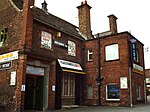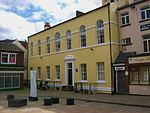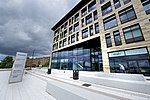Capture of Wakefield

The capture of Wakefield occurred during the First English Civil War when a Parliamentarian force attacked the Royalist garrison of Wakefield, Yorkshire. The Parliamentarians were outnumbered, having around 1,500 men under the command of Sir Thomas Fairfax, compared to the 3,000 led by George Goring in Wakefield. Despite being outnumbered, Parliamentarians successfully stormed the town, taking roughly 1,400 prisoners. Around 800 Parliamentarians had been taken prisoner after being defeated at Seacroft Moor, and Fairfax plotted the capture of Wakefield to take prisoners of his own to exchange for his men. He marched his force from Leeds and split it in two to attack from different directions. After around two hours of fighting early in the morning of 21 May, 1643, Fairfax broke through into Wakefield. Goring, who had been in bed suffering from either illness or a hangover, rose and led a counterattack in his nightshirt, but to no avail and the town was captured. Fairfax gained the prisoners he needed and much ammunition. According to his own account, the Parliamentarians lost no more than seven men.
Excerpt from the Wikipedia article Capture of Wakefield (License: CC BY-SA 3.0, Authors, Images).Capture of Wakefield
Westmorland Street, Wakefield Eastmoor
Geographical coordinates (GPS) Address Website Nearby Places Show on map
Geographical coordinates (GPS)
| Latitude | Longitude |
|---|---|
| N 53.683055555556 ° | E -1.4969444444444 ° |
Address
Wakefield Cathedral
Westmorland Street
WF1 1HG Wakefield, Eastmoor
England, United Kingdom
Open on Google Maps











